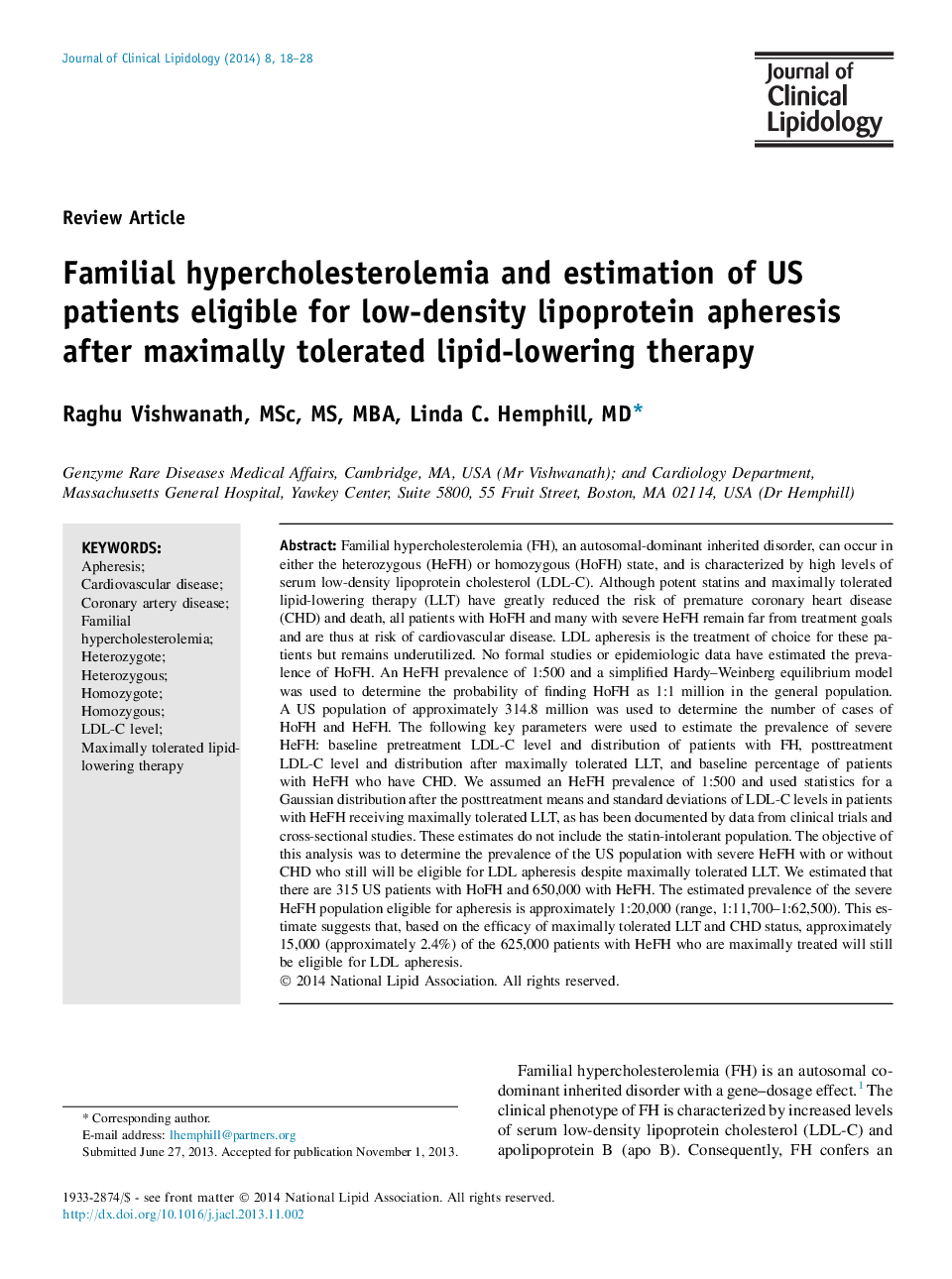| Article ID | Journal | Published Year | Pages | File Type |
|---|---|---|---|---|
| 2965847 | Journal of Clinical Lipidology | 2014 | 11 Pages |
►All patients with homozygous familial hypercholesterolemia (FH) and many with heterozygous FH remain far from treatment low-density lipoprotein (LDL) cholesterol goals.►The National Lipid Association recently recommended 4 additional patient segments for LDL apheresis.►Recently approved therapies hold promise in reducing the frequency of apheresis and also potentially the number of patients that may need apheresis.►LDL apheresis is the therapy of choice for patients with severe, refractory FH.►LDL apheresis remains an underused option for uncontrolled severe FH.
Familial hypercholesterolemia (FH), an autosomal-dominant inherited disorder, can occur in either the heterozygous (HeFH) or homozygous (HoFH) state, and is characterized by high levels of serum low-density lipoprotein cholesterol (LDL-C). Although potent statins and maximally tolerated lipid-lowering therapy (LLT) have greatly reduced the risk of premature coronary heart disease (CHD) and death, all patients with HoFH and many with severe HeFH remain far from treatment goals and are thus at risk of cardiovascular disease. LDL apheresis is the treatment of choice for these patients but remains underutilized. No formal studies or epidemiologic data have estimated the prevalence of HoFH. An HeFH prevalence of 1:500 and a simplified Hardy–Weinberg equilibrium model was used to determine the probability of finding HoFH as 1:1 million in the general population. A US population of approximately 314.8 million was used to determine the number of cases of HoFH and HeFH. The following key parameters were used to estimate the prevalence of severe HeFH: baseline pretreatment LDL-C level and distribution of patients with FH, posttreatment LDL-C level and distribution after maximally tolerated LLT, and baseline percentage of patients with HeFH who have CHD. We assumed an HeFH prevalence of 1:500 and used statistics for a Gaussian distribution after the posttreatment means and standard deviations of LDL-C levels in patients with HeFH receiving maximally tolerated LLT, as has been documented by data from clinical trials and cross-sectional studies. These estimates do not include the statin-intolerant population. The objective of this analysis was to determine the prevalence of the US population with severe HeFH with or without CHD who still will be eligible for LDL apheresis despite maximally tolerated LLT. We estimated that there are 315 US patients with HoFH and 650,000 with HeFH. The estimated prevalence of the severe HeFH population eligible for apheresis is approximately 1:20,000 (range, 1:11,700–1:62,500). This estimate suggests that, based on the efficacy of maximally tolerated LLT and CHD status, approximately 15,000 (approximately 2.4%) of the 625,000 patients with HeFH who are maximally treated will still be eligible for LDL apheresis.
